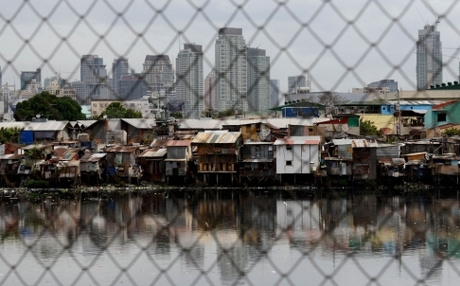Philippine Economy Rebounds, Joins Asia Top Performers

The Philippine economy rebounded to post 6.4-percent growth in the second quarter and regain its status as one of the strongest in Asia, authorities said Thursday.
The private sector took the lead as the economy recovered from a relatively modest expansion of 5.6 percent in the first quarter, which was partly due to the impact of devastating natural disasters, economic chiefs said.
"This higher growth rate, coming from a high base a year ago, shows that the economy is back on the higher trajectory of growth," Economic Planning Secretary Arsenio Balisacan said.
"We remain as one of the bright spots in the region, the second-fastest-growing economy among major Asian countries for the period, tied with Malaysia’s performance."
He cited the strong performances of the industry, services and exports sectors for much of the recovery, offsetting lower government spending that was partly due to "administrative bottlenecks".
The latest figures brought growth for the first half of 2014 to 6.0 percent and boosted optimism that the country would still attain its target of 6.5 to 7.5 percent growth for the whole year, Balisacan said.
Independent economists gave guardedly optimistic assessments for the Philippines, a nation of 100 million people which in recent years has seen its economy surge after long lagging behind most of its Asian neighbors.
The Philippine economy grew 6.8 percent in 2012 and 7.2 percent in 2013, but there are concerns about the sustainability of such strong numbers.
"It's a decent rebound but there are still challenges ahead," said Johnathan Ravelas, chief market strategist of BDO Unibank, one of the country's largest banks.
Ravelas cited as among the potential threats the barrage of storms that hit the Philippines, particularly in the second half of the year, and emerging "political noise" as the 2016 national elections get closer.
He also told Agence France Presse the government needed to accelerate spending to address the need for better infrastructure and more reliable energy sources.
ANZ Research, in an advisory, said it was forecasting 6.9-percent growth for the whole of 2014, but that this depended on President Benigno Aquino pushing ahead with plans to increase spending on infrastructure.
Balisacan told reporters that state spending would increase with urgency, saying "the identified administrative bottlenecks that contributed to the underperformance of the government sector are being addressed".
He also said the government had dealt with delays in approving rehabilitation projects for communities devastated by Super Typhoon Haiyan, the most powerful storm ever to hit land, in November last year.
The storm left more than 7,300 people dead or missing across farming and fishing areas of the central Philippines.



